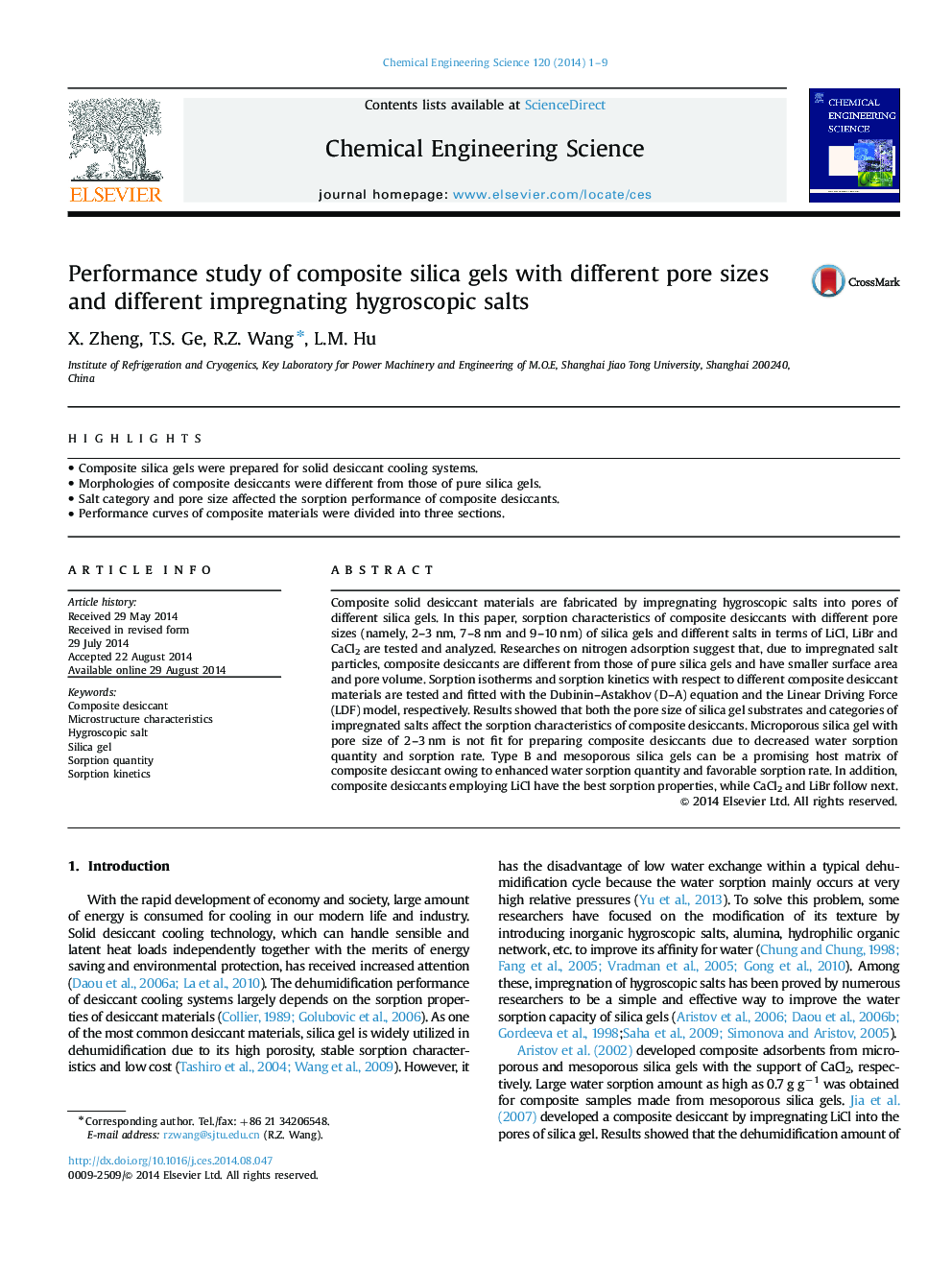| Article ID | Journal | Published Year | Pages | File Type |
|---|---|---|---|---|
| 6590931 | Chemical Engineering Science | 2014 | 9 Pages |
Abstract
Composite solid desiccant materials are fabricated by impregnating hygroscopic salts into pores of different silica gels. In this paper, sorption characteristics of composite desiccants with different pore sizes (namely, 2-3Â nm, 7-8Â nm and 9-10Â nm) of silica gels and different salts in terms of LiCl, LiBr and CaCl2 are tested and analyzed. Researches on nitrogen adsorption suggest that, due to impregnated salt particles, composite desiccants are different from those of pure silica gels and have smaller surface area and pore volume. Sorption isotherms and sorption kinetics with respect to different composite desiccant materials are tested and fitted with the Dubinin-Astakhov (D-A) equation and the Linear Driving Force (LDF) model, respectively. Results showed that both the pore size of silica gel substrates and categories of impregnated salts affect the sorption characteristics of composite desiccants. Microporous silica gel with pore size of 2-3Â nm is not fit for preparing composite desiccants due to decreased water sorption quantity and sorption rate. Type B and mesoporous silica gels can be a promising host matrix of composite desiccant owing to enhanced water sorption quantity and favorable sorption rate. In addition, composite desiccants employing LiCl have the best sorption properties, while CaCl2 and LiBr follow next.
Keywords
Related Topics
Physical Sciences and Engineering
Chemical Engineering
Chemical Engineering (General)
Authors
X. Zheng, T.S. Ge, R.Z. Wang, L.M. Hu,
